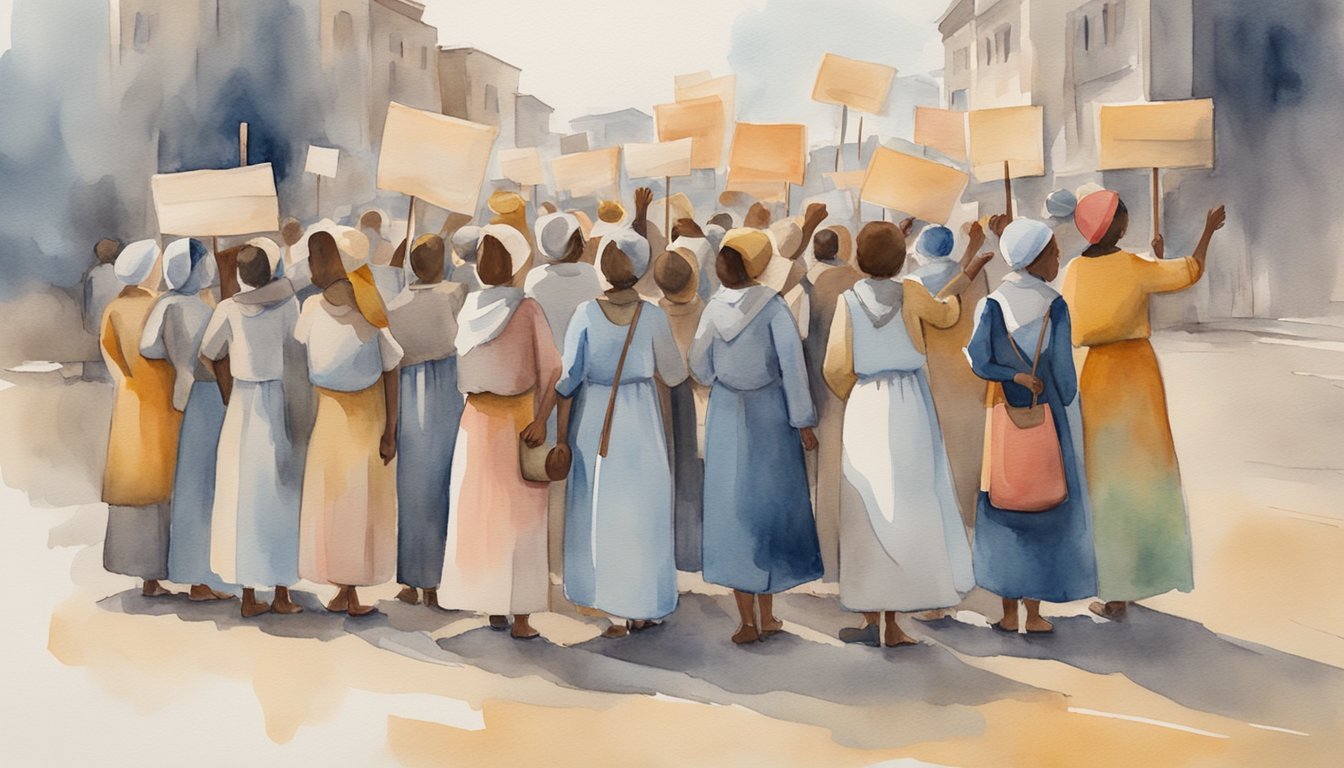The Matchstick Girls’ Struggle
Origins of the Matchstick Girls
In the late 19th century, women and young girls worked in the Bryant & May matchstick factory in London’s East End. These workers, known as Matchstick Girls, faced incredibly low wages and poor working conditions in their daily lives.
The Reality of Matchstick Making
Matchstick making back then was both dangerous and tedious. The use of phosphorus in the matches led to a medical condition called “phossy jaw,” which caused disfigurement and intense pain. In addition, the working conditions within the factory were grueling, with long hours and fines for various infractions.
| Condition | Consequence |
|---|---|
| Phossy Jaw | Disfigurement, pain |
| Long hours | Exhaustion, poor health |
| Fines | Increased poverty |
The Match Girls’ Strike of 1888
In July 1888, the Matchstick Girls decided to take action against their harsh work environment. They went on strike after one of their colleagues was dismissed from the factory. The worker’s dismissal was the tipping point for the over 1,400 women and girls who then participated in the strike action.
Social reformer Annie Besant aided the Matchstick Girls in their struggle. Besant reported their plight in an article titled “White Slavery in London,” published in her magazine called The Link. This exposure helped garner support for the strikers.
As a result of their collective action, the Matchstick Girls formed a strike committee and even gained the support of the then Trades Union Congress (TUC). Their courage and determination eventually led to improvements in their wages, working conditions, and the reduction of dangerous phosphorus usage in the factory.
Social Ramifications and Reforms

Impact on Women and Labor Movement
The Matchstick Girls’ Strike in 1888, led by women making and boxing matches for the Bryant & May matchstick company, had profound social ramifications. Matchstick girls, often young and impoverished, including many Irish immigrants, faced abject poverty and oppressive working conditions. The strike, which began in response to the sacking of a worker, eventually saw around 1,400 women and girls participating. Social reformer and activist Annie Besant was instrumental in raising awareness about their plight, publishing an exposé titled “White Slavery in London. ” Additionally, the striking match girls led to the formation of the Union of Women Matchmakers, which further strengthened their position. Their successful strike not only improved wages and working conditions but also inspired future labor movements advocating for women’s rights. The courage and solidarity shown by the matchstick girls resonated beyond their time, influencing broader discussions on workers’ rights and fair treatment in industrial labor. Much like how cultural icons such as the first athlete on Wheaties box became symbols of perseverance, the matchstick girls’ strike remains a landmark moment in labor history.
The strike represented a turning point in the labor movement, as it signaled that even the most marginalized workers could unite and demand change. The Matchstick Girls’ actions garnered support from the wider public and organizations like the London Trades Council, leading to increased pressure on the company and its shareholders.
Legal and Social Reforms
As the strike gained momentum, numerous social, legal, and institutional reforms emerged. Bryant & May, fearing damage to their reputation, conceded to the strikers’ demands. They agreed to better wages, safe working conditions, rehiring of fired workers, and cessation of punitive fines.
The victory of the match girls highlighted the effectiveness of collective action and inspired wider changes. The Fabian Society, a group of Victorian social reformers, was influenced by the strike’s success, while New Unionism emerged as a prominent labor movement propagating the formation of trade unions. The strike also played a role in the eventual repeal of the debilitating tax on matches, further alleviating financial burdens on matchstick workers.
Legacy of the Matchstick Girls
The Matchstick Girls’ Strike had a lasting impact on the labor movement, women’s empowerment, and working-class lives in Victorian Britain. Their activism led to greater awareness of health inequality and the consequences of the industrial revolution, exemplified by the deterioration of the jaw caused by exposure to toxic phosphorus.
Women like Sarah Chapman, one of the strike leaders, helped demonstrate the power of unions and female solidarity. The Matchstick Girls’ challenge to a patriarchal world paved the way for subsequent labor strikes and reforms that would reshape the landscape of British labor rights. Their remarkable tale serves as an enduring symbol of how unity and resilience can bring about meaningful change in the face of adversity.

